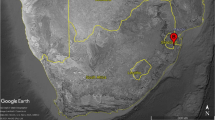Abstract
Thirteen Middle Bronze Age IIa and four Late Bronze Age IIb (ca. 1950-1750 B.C. and thirteenth century, B.C., respectively)pieces of charcoal or water logged wood were found in the recent excavations of Tel Nami, a small port on the coast near Mount Carmel, Israel. These includedCedrus libani (cedar of Lebanon) (three samples), and local tree species that still grow today in the vicinity of the site—Pinus halepensis (Aleppo pine) (one sample),Olea europaea (olive tree) (five samples),Quercus calliprinos (kermes oak) (three samples),Quercus ithaburensis (Mt. Tabor oak) (four samples), andQuercus sp. (one sample). The discovery of Cedrus libani in a Middle Bronze Age IIa port is one of the earliest published examples of cedar wood from Israel. Together with other artifactual evidence for maritime trade from Tel Nami, this find suggests that a maritime trade in cedar wood existed along the Levantine coast.
Resumen
17 Stücke Holzkohle oder voll Wasser gesogenes Holz, 13 aus Mittelbronze IIa und 4 aus Spätbronze IIb (1950–1750 v. Chr., und 13. Jhdt. v. Chr.) wurden in der kürzlichen Ausgrabung von Tel Nami gefunden, einem kleinen Hafen nahe dem Karmelberg, Israel. Diese Stücke enthaltenCedrus libani (die Libanon-Zeder), 3 Exemplare, und lokale Baumarten, die bis heute in der Gegend waschsen—Pinus halepensis (Aleppo-Fichte), ein Exemplar,Olea europaea (Ölbaum), 5 Exemplare, Quercus calliprinos (Kermes-Eiche), 3 Exemplare,Quercus ithaburensis (Tabor-Eiche), 4 Exemplare, und Eichenarten, 1 Exemplar. Die Entdeckung vonCedrus libani in einem Mittelbronze IIa-Hafen ist eins der frühesten publizierten Vorkommen von Zederholz aus Israel. Zusammen mit anderen Zeugnissen von Seehandel aus Tel Nami legt dieser Fund die Annahme nahe, daβ Seehandel in Zederholz längs der levantinischen Küste zu diesem frühen Zeitpunkt existiert hat.
Similar content being viewed by others
Literature Cited
Acherar, M., J. LePart, andM. DeBussche. 1984. La colonisation des friches par le pin d’Alep(Pinus halepensis Miller) en languedoc mediterraneen. Acta Oecologia (Oecologia Plantarum) 5:179–189.
Artzy, M. 1990. Nami land and sea project, 1985–1988. Israel Exploration Journal 40:73–76.
—. 1991. Nami land and sea project, 1989. Israel Exploration Journal 41:194–197.
—. 1994. Incense, Camels and Collar Rim Jars: Desert trade routes and maritime outlets in the 2nd Millennium. Oxford Journal of Archaeology 13: 121–148.
-. 1995. Nami: A Second Millennium international maritime trading center in the Mediterranean. Pages 17–40in S. Gitin, ed., Recent discoveries in Israel: view to the West, American Institute of Archaeology Series No. 1.
—, andE. Marcus. 1991. The MBIIa coastal settlement at Tel Nami. Michmanim 5:5–16.
Baruch, U. 1986. The late Holocene Vegetational History of Lake Kinneret (Sea of Galilee), Israel. Paléorient 12:37–48.
—,E. Werker, andO. Bar-Yosef. 1992. Charred wood remains from Kebara cave, Israel: preliminary results. Bulletin de la Société Botanique de France, Actualités Botaniques 139:531–538.
Fahn, A., andE. Zamski. 1988. Examination of some wooden objects. Page 235, Plates 140–142in B. Rothenberg, ed., The Egyptian mining temple at Timna. Institute of Archaeology, University College London, London.
—,E. Werker, andP. Baas. 1986. Wood anatomy and identification of trees and shrubs from Israel and adjacent regions. The Israel Academy of Sciences and Humanities, Jerusalem.
Greguss, P. 1955. Xylotomische Bestimmung der Heute Lebenden Gymnospermen. Akademiai Kiado, Budapest.
Kislev, M. E., M. Artzy, andE. Marcus. 1993. Import of an Aegean food plant to a Middle Bronze ILA coastal site in Israel. Levant 25:145–154.
Lev-Yadun, S. 1992. The origin of the cedar beams from Al-Aqsa Mosque: Botanical, historical and archaeological evidence. Levant 24:201–208.
—, andM. Weinstein-Evron. 1994. Late Epipalaeolithic wood remains from el-Wad Cave, Mount Carmel, Israel. The New Phytologist 127: 391–396.
Liphschitz, N. 1987. Ancient vegetation of the Yarkon Basin according to botanical remnants from excavations. Pages 101–104in R. Zeevy, ed., Israel —People and land. Yearbook of Eretz Israel Museum, Tel Aviv. Vol. 4. Tel Aviv: Eretz Israel Museum (Hebrew and English summary, p. 11–12).
-. 1992. Dendroarchaeological investigation—Seasons 1988–90. Pages 25–32in A. Kempinski and W.-D. Niemeier, eds., Excavations at Kabri 6, preliminary report of 1991 season. Tel Aviv, (Hebrew and English summary, p. 7).
—,R. Gophna, M. Hartman, andG. Biger. 1991. The beginning of olive (Olea europaea) cultivation in the Old World: A reassessment. Journal of Archaeological Science 18:441–453.
Marcus, E. S. 1991. Tel Nami: A Study of a Middle Bronze IIA Period Coastal Settlement. MA Thesis. University of Haifa.
Meiggs, R. 1982. Trees and timber in the ancient Mediterranean world. Clarendon Press, London.
Mikesell, M. W. 1969. The deforestation of Mount Lebanon. The Geographical Review 59:1–28.
Paley, S. M., andY. Porath. 1985. The Emeq Hefer Archaeological Research Project, 1985. Israel Exploration Journal 35:299–301.
Porath, Y., andS. M. Paley. 1993. Tel Hefer—1990. Hadashot Arkheologiyot 99:29-31 (in Hebrew). Redford, R. B. 1992. Egypt, Canaan, and Israel in ancient times. Princeton University Press, Princeton.
Schweingruber, F. H. 1990. Anatomy of European woods. Paul Haupt, Bern.
Shaw, G. R. 1914. Thegenus Pinus. Publication of the Arnold Arboretum No. 5, Cambridge.
Stager, L. E. 1985. The firstfruits of civilization. Pages 172–188in J. N. Tubb, ed., Palestine in the Bronze and Iron Ages: Papers in Honor of Olga Tufnell. Occasional Publication No. 11. Institute of Archaeology, London.
Ussishkin, D. 1983. Excavations at Tel Lachish 1978–1983: Second Preliminary Report. Tel Aviv 10:97–175.
Werker, E. 1988. Wood. Pages 232-235, Plates 135-139in B. Rothenberg, ed., The Egyptian mining temple at Timna. Institute of Archaeology, University College London, London.
Zinger, A. 1985. Olive growing. Department of Horticulture, Ministry of Agriculture, Israel, Tel Aviv (in Hebrew).
Zohary, D., andM. Hopf. 1993. Domestication of Plants in the Old World. 2nd ed. Oxford University Press, Oxford.
Author information
Authors and Affiliations
Rights and permissions
About this article
Cite this article
Lev-Yadun, S., Artzy, M., Marcus, E. et al. Wood remains from Tel Nami, a middle bronze IIa and late bronze IIb port, local exploitation of trees and levantine cedar trade. Econ Bot 50, 310–317 (1996). https://doi.org/10.1007/BF02907339
Received:
Accepted:
Issue Date:
DOI: https://doi.org/10.1007/BF02907339




